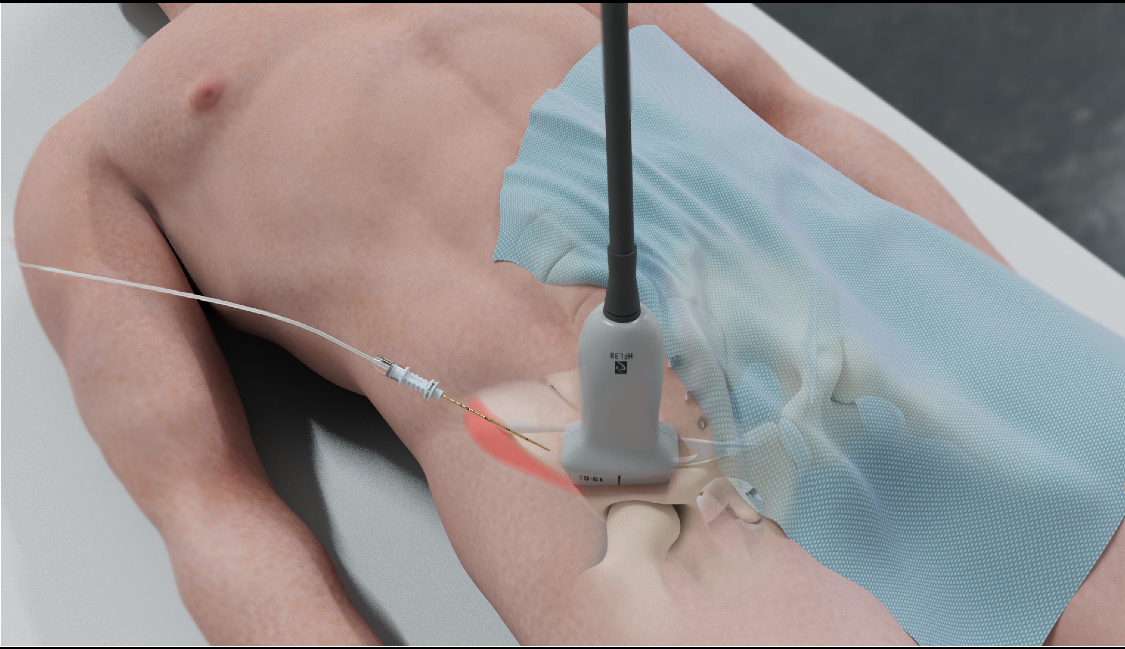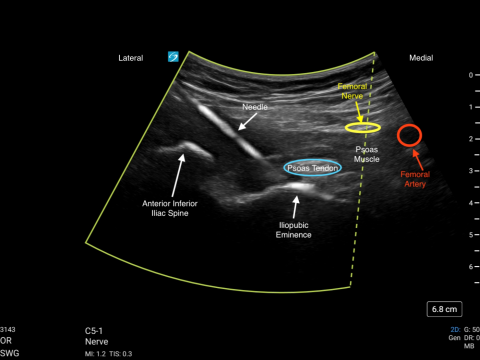Image

Objective
Injection of local anesthetic deep to the Psoas Tendon in proximity to the Acetabulum and the Anterior Capsule of the Hip. The local anesthetic targets the terminal nerves of the lumbar plexus including the Femoral Nerve, the Obturator Nerve and the Accessory Obturator Nerve.
Technique:
- Begin by placing the transducer transverse at the medial border of the Anterior Superior Iliac Spine. The medial aspect of the ASIS will be visualized at this point.
- Rotate the medial edge of the probe 30-45 degrees inferiorly.
- Slide the transducer inferiorly, maintaining visualization of the pelvis to identify the Anterior Inferior Iliac Spine, the Iliopubic Eminence, the Psoas Tendon and Femoral Artery.
- Use the in-plane needle technique with a lateral to medial approach to target the injection of local anesthetic deep to the Psoas Tendon.
Image

Patient Positioning:
Supine
Transducer:
Teaching Points:
- The PENG block is a field block of the terminal nerves to the hip. If injection is difficult deep to the psoas tendon, local anesthetic may be injected superficial to the psoas tendon.
- Tilting the ultrasound transducer caudally will allow visualization of the Femoral Head. This is useful to ensure close proximity to the hip joint.
- The PENG block may allow for easier positioning of hip fracture patients for spinal anesthetic.
- The PENG Block is often combined with the Lateral Femoral Cutaneous Nerve Block for Total Hip Arthroplasty.
- The PENG block is a “volume dependent” block.
- When using a curvilinear probe, the block needle should be inserted near the transducer using the in plane technique. This will help visualize the block needle.
- Insertion of the needle into the hip capsule may make injection difficult. The needle should be withdrawn slightly until it is easy to inject.
Click to download the guide today.

